The University of Alabama Museums house several million items from prehistoric fossils to ancient tools to animal specimens of all sorts to sports memorabilia – and pretty much anything in between.
Visitors can see many of these items on display, but the public exhibits only scratch the surface of what UA Museums’ department of museum research and collections manages. These items are used by researchers, including students, from around the world and also for teaching and outreach.
Take a Peek
The following photos are a small sampling of items not on public display. If you think these are neat, just take a stroll through any of the UA Museums to see the extraordinary things that are on display.
16mm Game Footage Reels
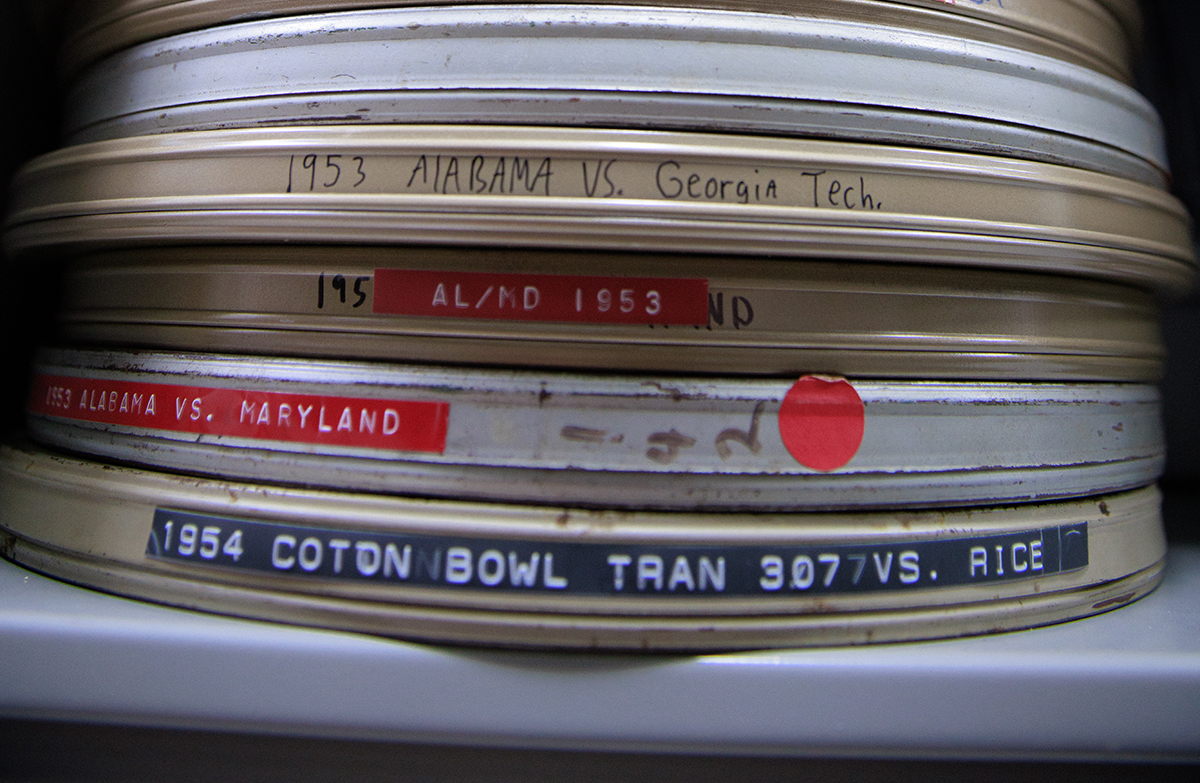
These 16mm film reels of Alabama football games are just a few of the 10,000 found in the Bryant Museum’s collection. The museum also boasts 20,000 to 30,000 video tapes (VHS, Umatic, Beta SP) of various game recordings, including basketball, softball, gymnastics, baseball and more.
Ancient Reptile-Like Footprint
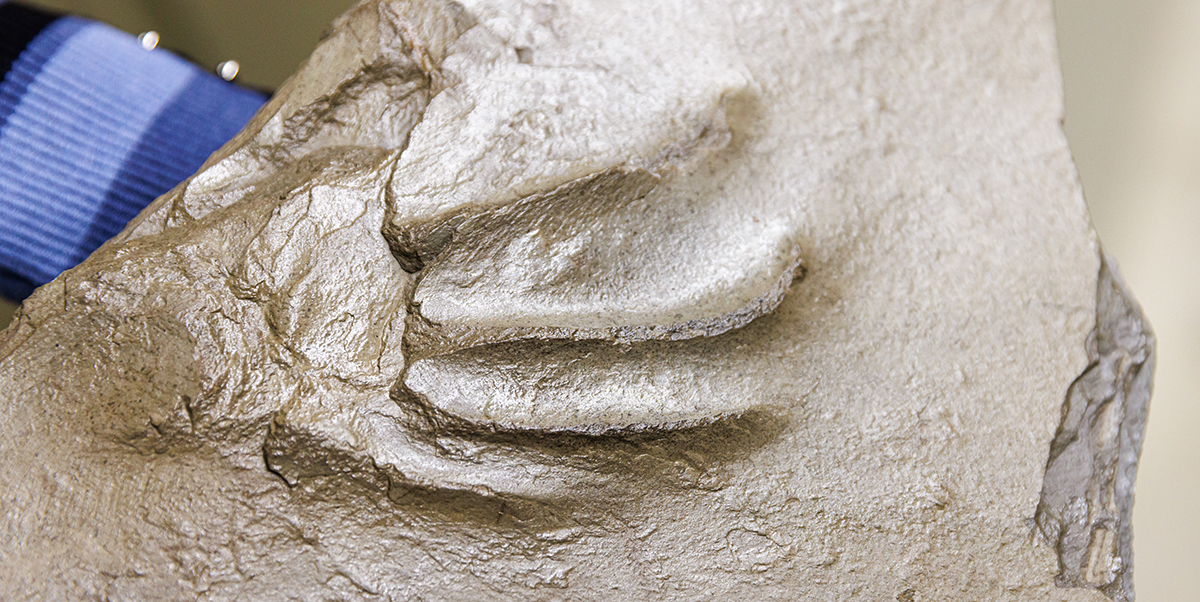
This large footprint is from an ancient reptile-like amphibian living in the swamps of Alabama during the Coal Age, approximately 315 million years ago.
“This specimen was found in the famous Union Chapel Mine, an old coal mine that was salvaged by the state for the sake of science and education through the collaborative efforts of avocational and professional paleontologists,” explained Dr. Adiel Klompmaker, curator of paleontology at UA Museums’ department of museum research and collections.
Athletics Scrapbook
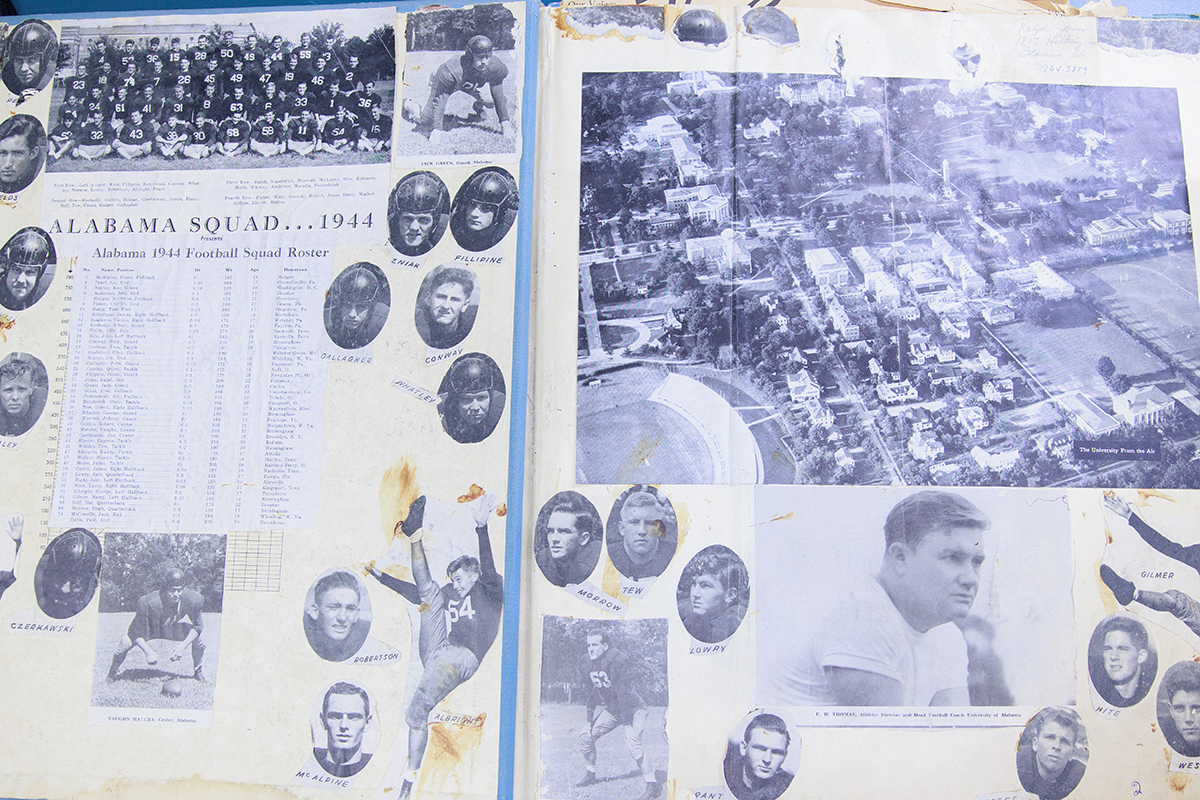
This Athletics scrapbook from 1944 was compiled in a wallpaper sample catalog because printing materials for large books were scarce during World War II. The earliest scrapbooks in the museum’s collection are from 1915 and go up to 2012, when the publication went digital.
Cretaceous Marine Reptile Skull Elements
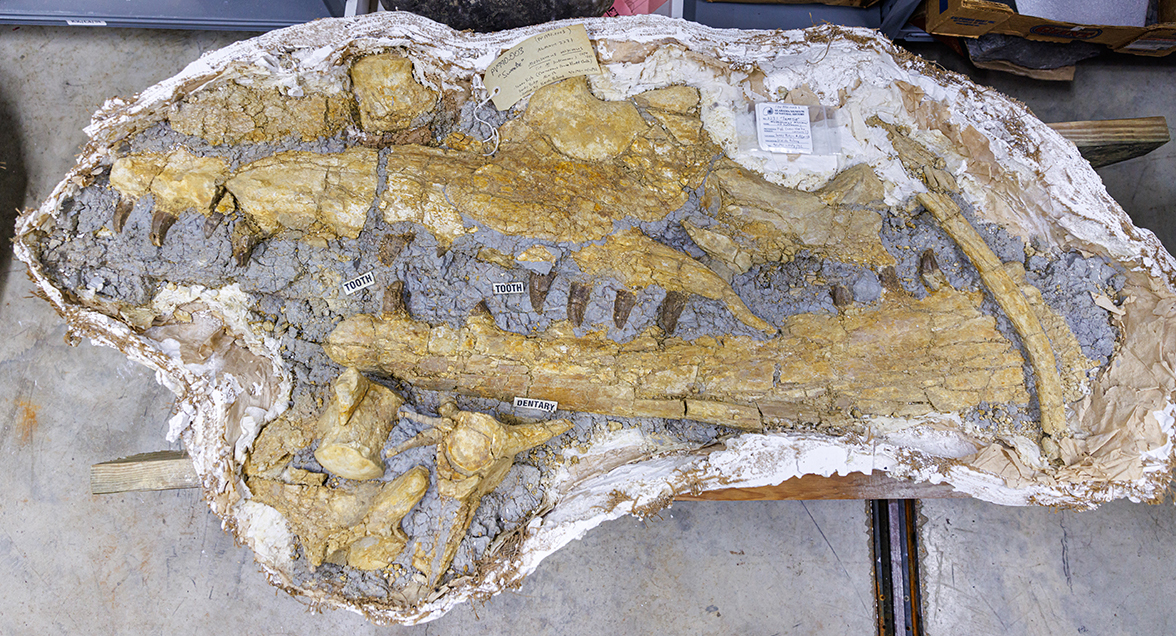
Skull elements and vertebrae of a Cretaceous marine reptile called a mosasaur are encased in a plaster jacket. This approximately 70 million-year-old Alabama mosasaur may have been longer than 40 feet. The Alabama Museum of Natural History paleontology collection has one of the largest mosasaur collections in the world with more than 1,000 records and attracts researchers from all over the world.
“Bear” Bryant’s Practice Schedules
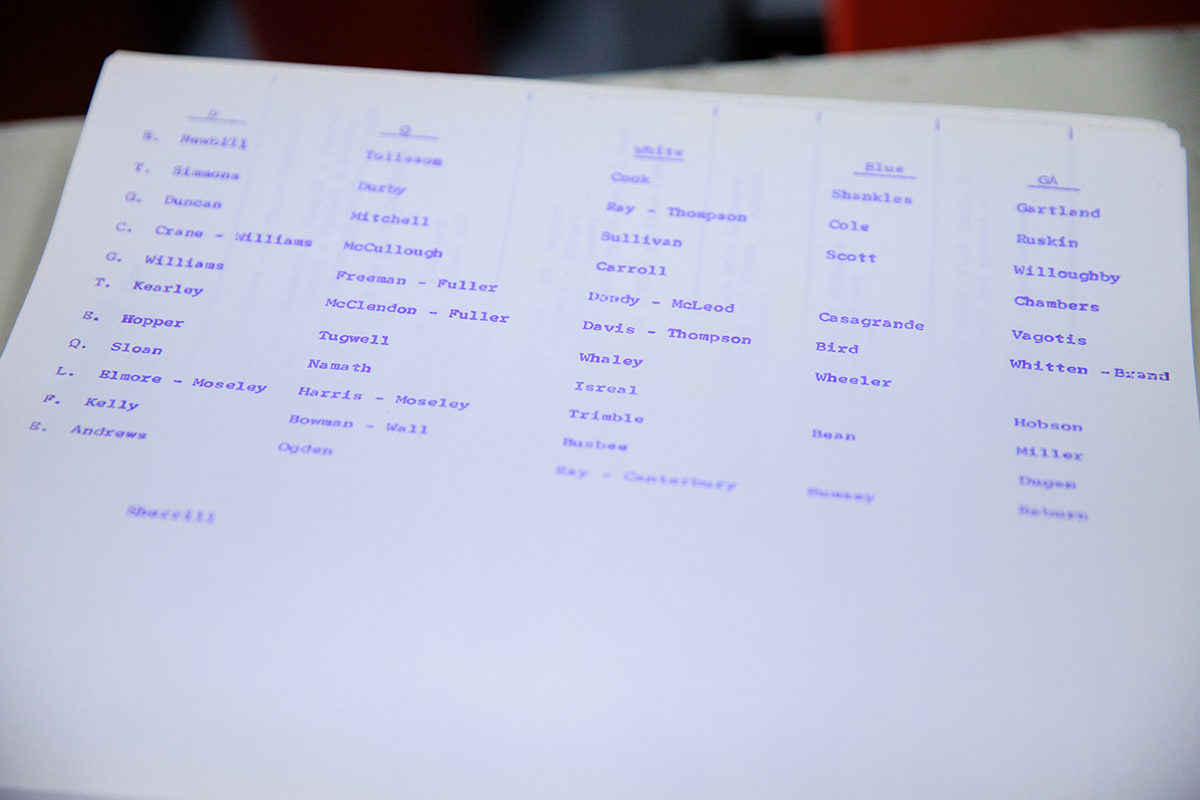
Coach Paul “Bear” Bryant’s practice schedules included the depth charts for each week during the season and information on the upcoming opponent. The Bryant Museum also has some schedules from coaches Ray Perkins, Gene Stallings and Mike DuBose. Each of those is a bit different in terms of the information on them.
1902 U.S. Army Officer’s Sword
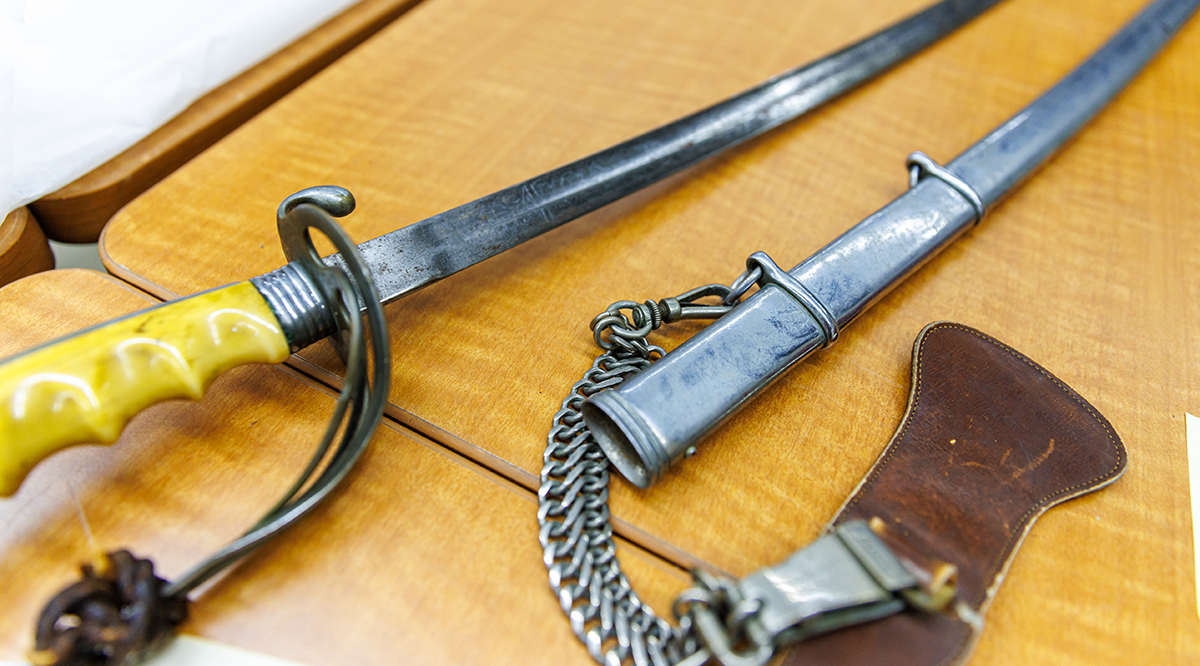
A Model 1902 U.S. Army Officer’s Sword. Originally produced in 1902 in response to the need for a lighter sword, the Model 1902 saber is still used ceremonially by the U.S. Army and Air Force. U.S. Army officers used this specific model between 1902 and 1925.
Original Big Al Mascot Head
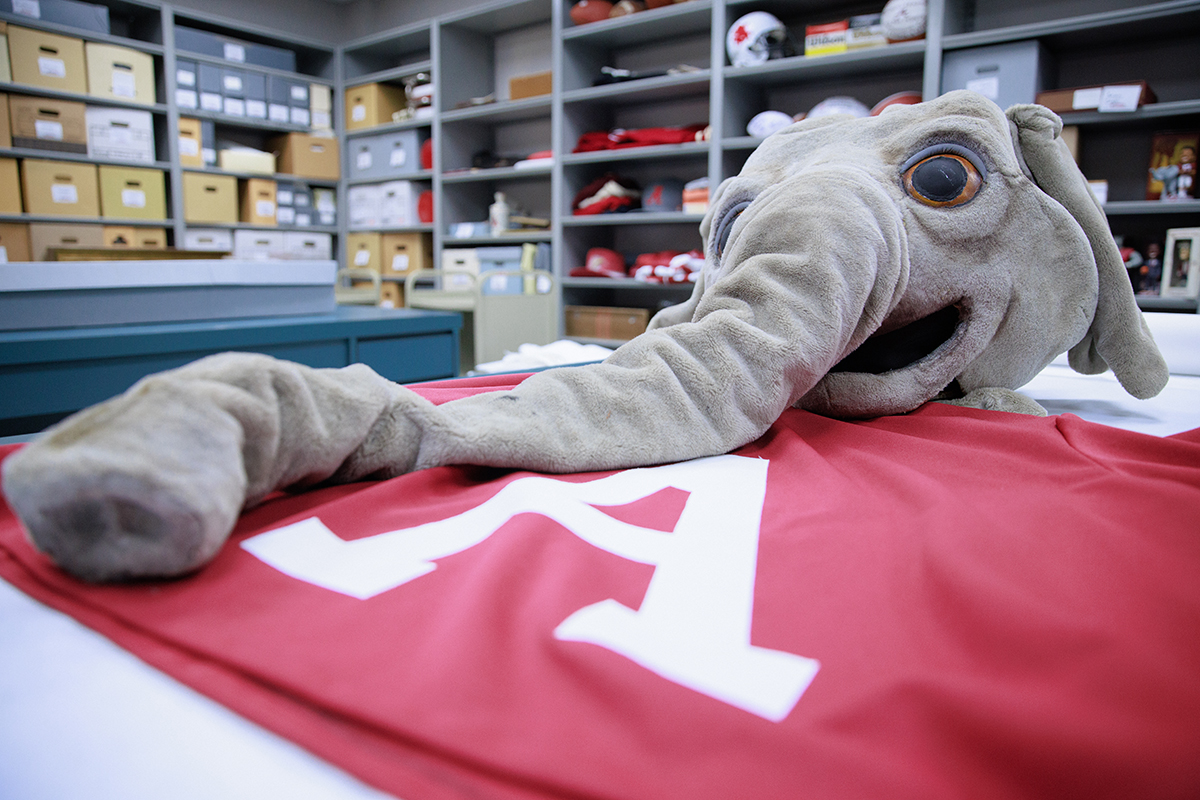
The first official Big Al mascot costume is held in the Bryant Museum’s archives. The body suit is currently in the process of restoration. The first game he appeared at was the Jan. 1, 1980, Sugar Bowl versus Arkansas.
Cretaceous Fossil Crab
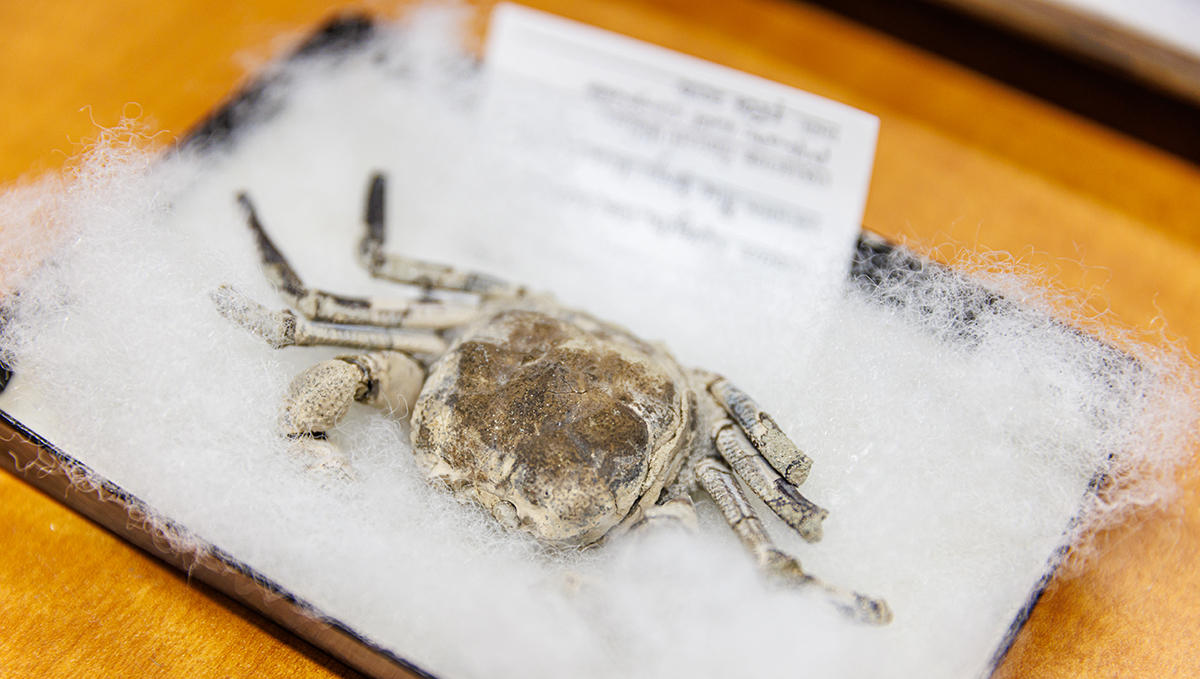
A well-preserved fossil crab from the Cretaceous of Mississippi, approximately 70 million years old. It was discovered by Dr. Prescott Atkinson, a UA Museums Board of Regents member, and excavated and prepared by Klompmaker, who studies ancient crustaceans.
Concrete Head from Bryant Hall Fountain
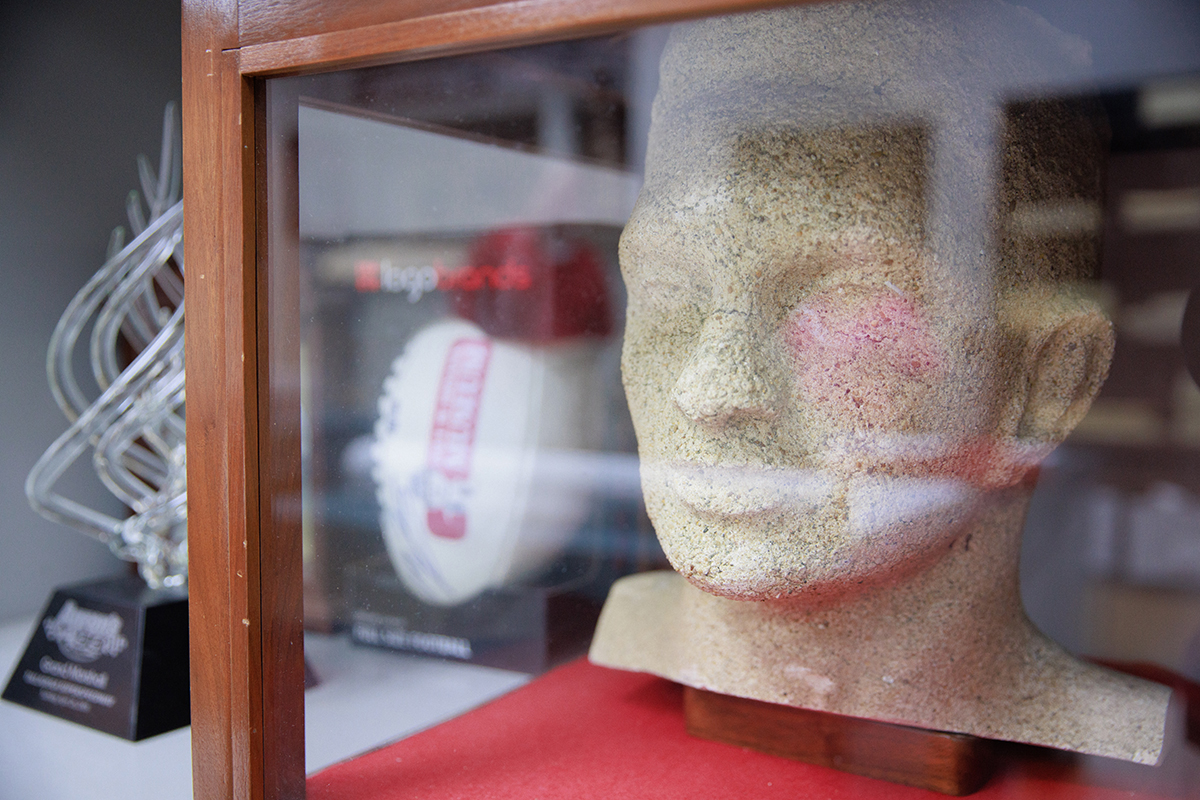
This concrete head was part of a fountain that once adorned the front of the former Paul W. Bryant Hall, which was constructed in 1965. It is believed the fountain was taken down in the 1980s.
Pangolin Hide
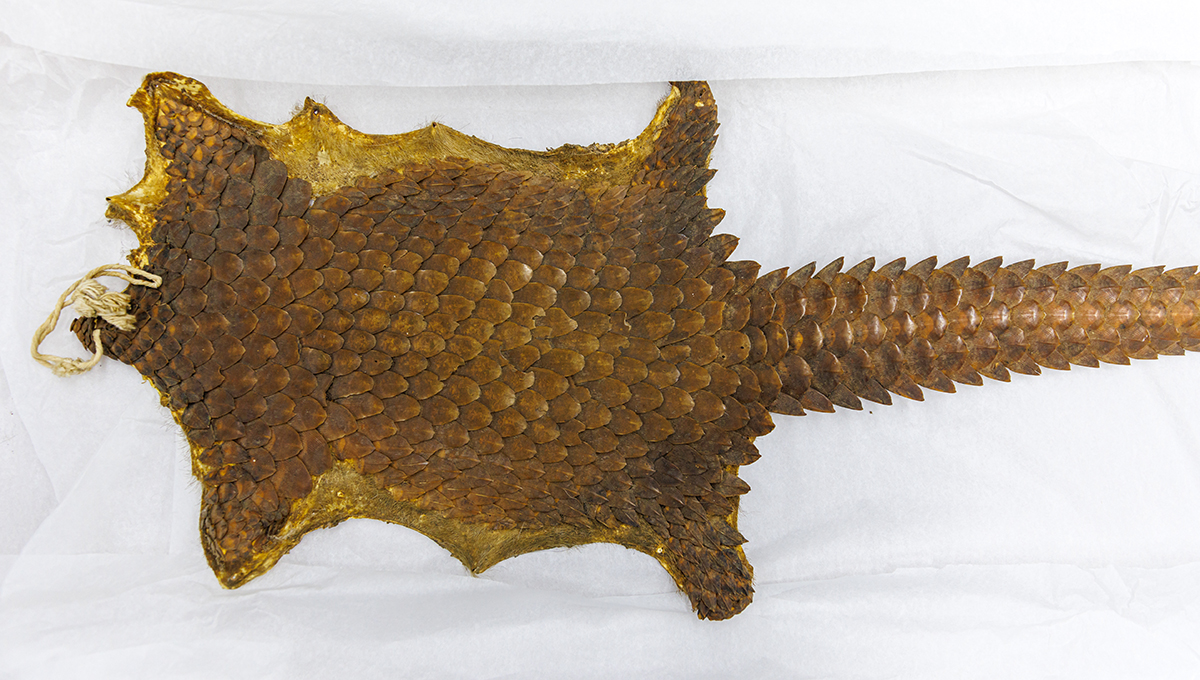
The scaled hide of a pangolin. Pangolins are mammals found in parts of Asia and Africa and are endangered due to habitat loss and illegal poaching.
A Curator’s Favorite
Brad Green, curator of the Paul W. Bryant Museum has a favorite piece that is on display.
“The LeRoy Neiman original painting of Coach Bryant holds a special place in my heart because, at the time [it was acquired], I had been in my position for less than a year,” he said. “With our small staff, everyone pitched in to make things happen.
“I remember designing and creating the invitations for the event and assisting in making tablecloths from painter’s canvas drop cloths that we splatter painted with various house paints. I even convinced my mom to cater the event, although health safety regulations likely wouldn’t permit that today.”
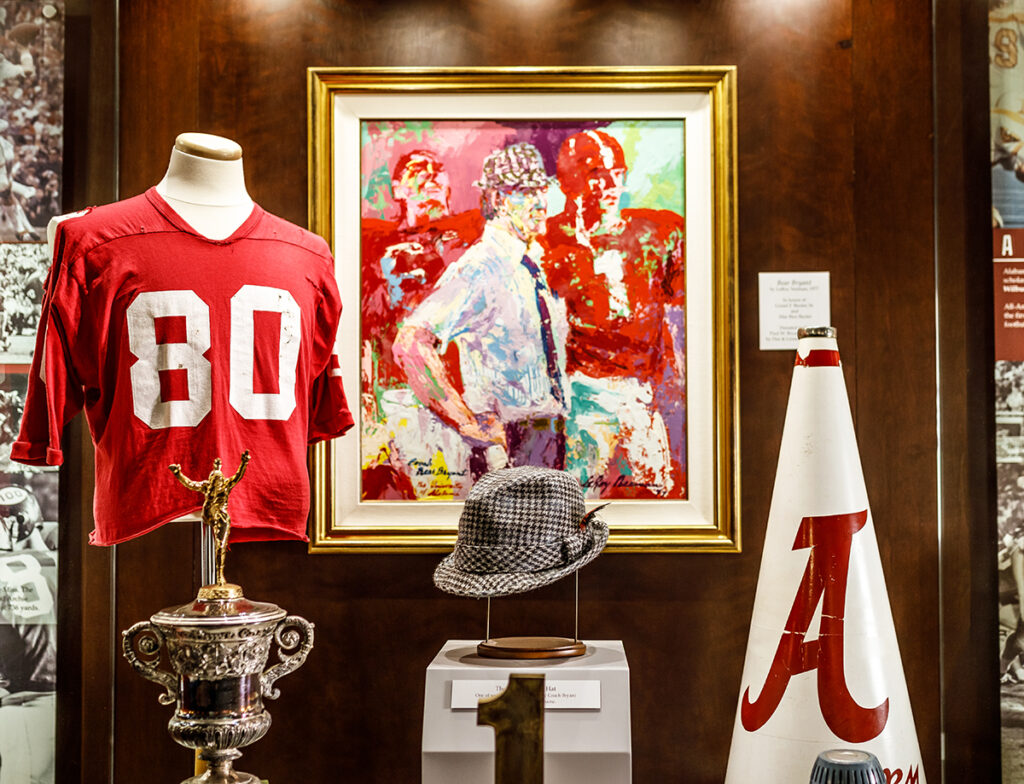
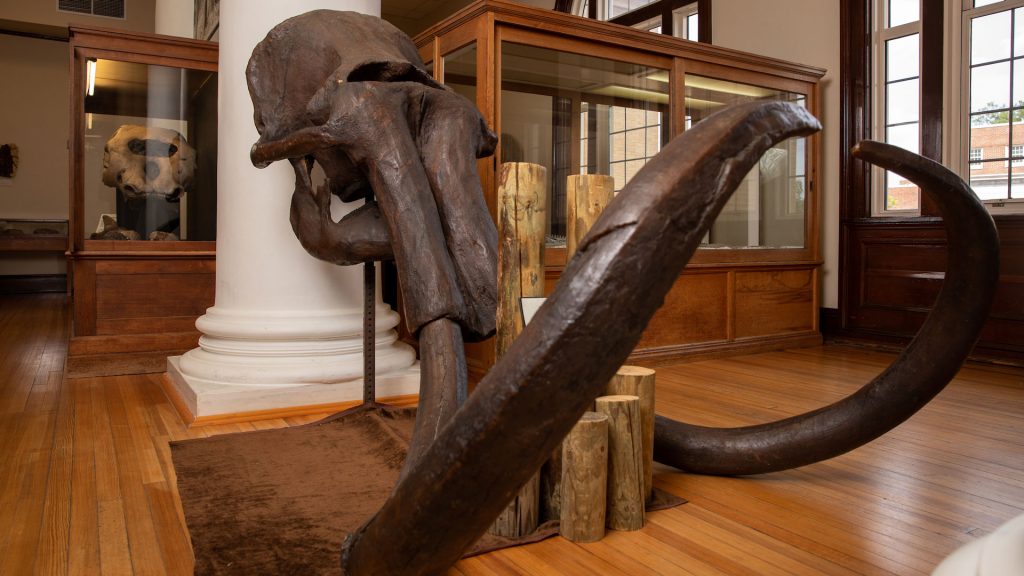
See For Yourself
Check out the UA Museums website to plan your visit, find directions or request to view special collections. Faculty are also encouraged to borrow from the museum collections for educational and classroom use.